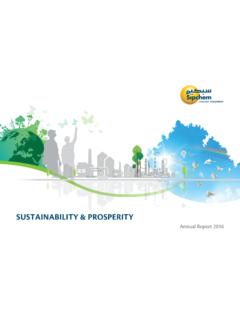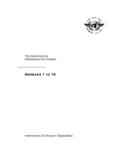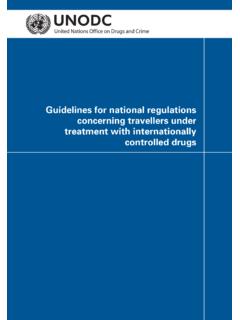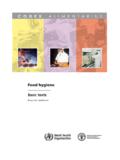Transcription of Vinyl Acetate Monomer Safety Data Sheet …
1 Vinyl Acetate Monomer Safety data Sheet international Vinyl Acetate company Safety data Sheet according to Regulation (EC) No. 1272/2008, Regulation (EC) Vinyl Acetate Monomer , rev 2 7/2012 Page 1 Safety data Sheet According to Regulation (EC) No. 1272/2008, Regulation (EC) 1907/2006 1. Identification of the substance/mixture and of the responsible company Product Identifier: Vinyl Acetate Monomer (CH3 COOCH=CH2) Other names/synonyms: Acetic acid Vinyl ester; Vinyl Acetate ; Vinyl A Monomer ; VyAc; 1-Acetoxyethylene; CH3C02Ch=CH2; Ethenyl Acetate ; Ethenyl ethanoate; Acetate de vinyle; Ethanoic acid, ethenyl ester; Octan winylu; Vinile ( Acetate di); Vinyl Acetate ; Vinyl ethanoate; Vinylacetaat; Vinylacetat; Vinyle ( Acetate de); Zeset T; Acetic acid, ethylene ether; UN 1301; VAC; Vinile; Vinyle; Vinylester kyseliny octove; Vinyl ester of acetic acid Relevant identified uses of the substance or mixture and uses advised against: Identified uses: Chemical for synthesis.
2 Used in polyvinyl Acetate , adhesives, floor tiling, water-based emulsion paints and elastomers Details of the supplier of the Safety data Sheet : international Vinyl Acetate company (IVC) PO Box 12021 Post Coe 31961 Jubail Industrial City Kingdom of Saudi Arabia Website: Emergency telephone number: 00966-359 9985 (24 hours) 2. Hazards Identification Vinyl Acetate Monomer CAS 108-05-04 Purity: minimum Hydroquinone CAS 123-31-9, as a stabilizer; 3-17 ppm Trace Impurities: Acetaldehyde 100 ppm Max., Acetic acid: 50ppm Max, water 400ppm Max Classification of the substance or mixture: Classification of Labeling in accordance with the CLP Regulations: Index No international Chemical Identification EC No CAS No Classification Labeling Specific Conc. Limits, M-factors Notes Hazard Class and Category Code(s) Hazard statement Code(s) Pictogram Signal Word Code(s) Hazard Statement Code(s) Suppl. Hazard statement Code(s) 607-023-00-0 Vinyl Acetate 203-545-4 108-05-4 Carc.
3 2 Flam. Liq. 2 (currently in annex VI) Acute Tox. 4 STOT SE 3 H351 H225 H332 H335 GHS02 GHS07 GHS08 Dgr H351 H225 H332 H335 D (currently in Annex VI) Vinyl Acetate Monomer Safety data Sheet international Vinyl Acetate company Safety data Sheet according to Regulation (EC) No. 1272/2008, Regulation (EC) Vinyl Acetate Monomer , rev 2 7/2012 Page 2 Classification & Labeling in accordance with Directive 67/548/EEC: Index No international Chemical Identification EC No CAS No Classification Labeling Concentration Limits Notes 607-023-00-0 Vinyl Acetate 203-545-4 108-05-4 Carc. Cat. 3; R40 F; R11 (currently in Annex VI) Xn; R20 Xi; R37 F; Xn R: 11-20-37-40 S: (2-) 36/37-46 D (currently in Annex VI) Classification according to Regulation 1272/2008/EC (CLP) Basis for Classification This substance is classified based on Directive 1272/2008/EC and its amendments (CLP Regulation,GHS) GHS Classification Hazards Category Flammable liquid Category 2 Acute inhalation toxicity Category 4 Carcinogenicity Category 2 Specific target organ systemic toxicity (single exposure) Category 3 Symbols Signal Word Danger Hazard Statements H225 - Highly flammable liquid and vapor H332 - Harmful if inhaled H335 - May cause respiratory irritation H351 - Suspected of causing cancer Precautionary Statements P201 - Obtain special instructions before use P202 - Do not handle until all Safety precautions have been read and understood P210 - Keep away from heat/sparks/open flames/hot surfaces.
4 - No smoking P235 - Keep cool P240 - Ground/bond container and receiving equipment P241 - Use explosion-proof electrical/ ventilating/ lighting/ equipment P242 - Use only non-sparking tools P243 - Take precautionary measures against static discharge P261 - Avoid breathing dust/ fume/ gas/ mist/ vapors/ spray P271 - Use only outdoors or in a well-ventilated area P281 - Use personal protective equipment as required P303 + P361 + P353 - IF ON SKIN (or hair): Remove/ Take off immediately all contaminated clothing. Rinse skin with water/ shower P304 + P340 - IF INHALED: Remove to fresh air and keep at rest in a position comfortable for breathing P308 + P313 - IF exposed or concerned: Get medical advice/ attention P312 - Call a POISON CENTER or doctor/ physician if you feel unwell P370 + P378 - In case of fire: Use water spray for extinction P403 + P233 - Store in a well-ventilated place. Keep container tightly closed P405 - Store locked up P501 - Dispose of contents/container in accordance with local regulations Other Hazards The substance does not meet the criteria for PBT / vPvB according to REACH, Annex XIII Vinyl Acetate Monomer Safety data Sheet international Vinyl Acetate company Safety data Sheet according to Regulation (EC) No.
5 1272/2008, Regulation (EC) Vinyl Acetate Monomer , rev 2 7/2012 Page 3 Safety data Sheet Emergency overview: DANGER! EXTREMELY FLAMMABLE LIQUID AND VAPOR. FLAMMABLE. VAPOR MAY CAUSE FLASH FIRE. CAUSES RESPIRATORY TRACT AND EYE IRRITATION. MAY CAUSE SKIN IRRITATION. MAY CAUSE TARGET ORGAN DAMAGE, BASED ON ANIMAL data . POSSIBLE CANCER HAZARD MAY CAUSE CANCER, BASED ON ANIMAL data . Potential chronic health effects: CARCINOGENIC EFFECTS: Classified A3 (proven for animals) by ACGIH 2B (possible for humans) by IARC Risk of Cancer depends on duration and level of exposure. MUTAGENIC EFFECTS: No known significant effects or critical hazards. REPRODUCTION TOXICITY: No known significant effects or critical hazards. Label: See table above. Other hazards: None known. 3. Composition/information on ingredients Formula C4H6O2 CAS-No. 108-05-4 Index-No. 607-023-00-0 EC-No. 203-545-4 4. First Aid Measures Description of first aid measures Eye Contact: Check for and remove any contact lenses.
6 Immediately flush eyes with plenty of water for at least 15 minutes, occasionally lifting the upper and lower eyelids. Get medical attention immediately. Skin Contact: In case of contact, immediately flush skin with plenty of water for at least 15 minutes while removing contaminated clothing and shoes. Wash clothing before reuse. Clean shoes thoroughly before reuse. Get medical attention immediately. Inhalation: Move exposed person to fresh air. If not breathing, if breathing is irregular or if respiratory arrest occurs, provide artificial respiration or oxygen by trained personnel. Loosen tight clothing such as a collar, tie, belt or waistband. Get medical attention immediately. Ingestion: Wash out mouth and water. Do not induce vomiting unless directed to do so by medical personnel. Never give anything by mouth to an unconscious person. Get medical attention immediately. Most important symptoms and effects, both acute and delayed: Dizziness, Gastrointestinal disturbance, and drowsiness.
7 Drying-out effect resulting in rough and chapped skin. Indication of immediate medical attention and special treatment needed: No additional information available. 5. Firefighting measures Extinguishing media Suitable extinguishing media: Use dry chemical, CO2, water spray (fog) or foam Unsuitable extinguishing media: Do no use a water jet. Special hazards arising from the substance or mixture: Extremely flammable liquid. In a fire or if heated, a pressure increase will occur and the contain may burst, with risk of subsequent explosion. The vapor/gas is heavier than air and will spread along the ground. Vapors may accumulate in low or confined areas or travel a considerable distance to a source of ignition and flash back. Runoff to sewer may create fire or explosion hazard. Vinyl Acetate Monomer Safety data Sheet international Vinyl Acetate company Safety data Sheet according to Regulation (EC) No. 1272/2008, Regulation (EC) Vinyl Acetate Monomer , rev 2 7/2012 Page 4 Advice for fire fighters: Special protective equipment for fire fighters: Fire fighters should wear appropriate protective equipment and self-contained breathing apparatus (SCBA) with a full face-piece operated in positive pressure mode.
8 Further information: Promptly isolate the scene by removing all persons from the vicinity of the incident if there is a fire. No action shall be taken involving an personal risk or without suitable training. Move containers from fire area if this can be done without risk. Use water spray to keep fire-exposed containers cool. Do not allow fire extinguishing water to contaminate surface or groundwater systems. 6. Accidental release measures Personal precautions, protective equipment and emergency procedures: Advice for non-emergency personnel: Evacuate the danger zone; follow emergency precautions. Secure emergency assistance immediately. Avoid contact with the material; do not breath vapors or aerosol. If possible, provide additional ventilation. Advice for emergency responders: Do not take action without proper training and emergency equipment. See Section 8 for additional information. Evacuate surrounding areas. Eliminate all ignition sources including flares and all open flames.
9 Avoid all contact with spiller material. Maintain adequate ventilation and wear appropriate respiratory protection. Environmental precautions: Avoid dispersal of spilled material and runoff and contact with soil, waterways, drains and sewers. Inform the relevant authorities if the product has caused environmental pollution (sewers, waterways, soil or air). Methods and materials for containment: Stop leak if without risk. Move containers from spill area. Approach release from upwind. Prevent entry into sewers, surface waters, basements or confined areas. Wash spillage into effluent treatment plant. Contain and collect spillage using appropriate personal protective equipment. Chemical-resistant, impervious gloves complying with an approved standard should be worn at all times when handing chemical products or if a risk assessment indicates this is necessary. Collect and contain spillage with non-combustible, absorbent material ( sand, earth, vermiculite or diatomaceous earth) and place in a container for disposal according to local regulations.
10 Use spark-proof tools and explosion proof equipment. Contaminated absorbent material may pose the same hazard(s) as the spilled product. Reference to other sections: See disposal instruction 13 and exposure controls Section 8. 7. Handling and storage Precautions for safe handling: Observe all label precautions. Use appropriate personal protective equipment (see section 8). Eating, drinking and smoking should be prohibited in areas where this material is handled, stored and processed. Workers should wash hands and face before eating, drinking and smoking. Do not get in eyes or on skin or clothing. Do not ingest. Avoid breathing vapor or mist. Use only with adequate ventilation. Wear appropriate respirator when ventilation is inadequate. Do not enter storage areas and confined spaces unless adequately ventilated. Keep in the original container or an approved alternative made from a compatible material, kept tightly closed when not in use.


![18.2% Ethylene - Vinyl Acetate [EVA] copolymer](/cache/preview/9/f/4/0/6/b/c/7/thumb-9f406bc7cf3a6248c0295bb5a269f78e.jpg)





